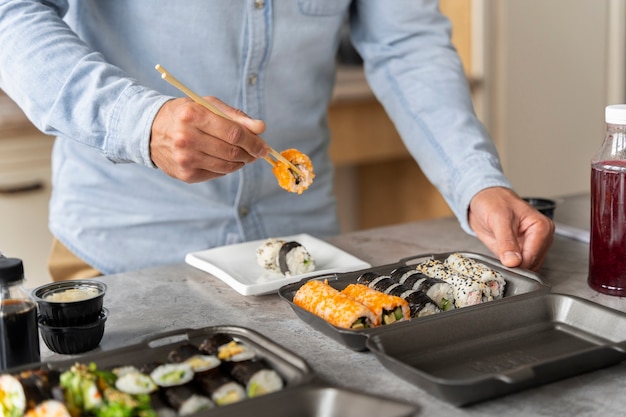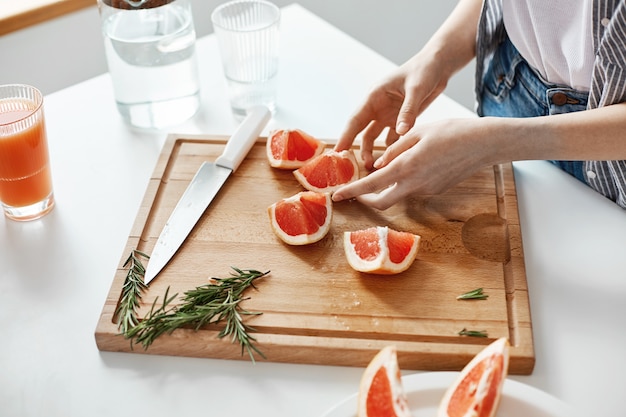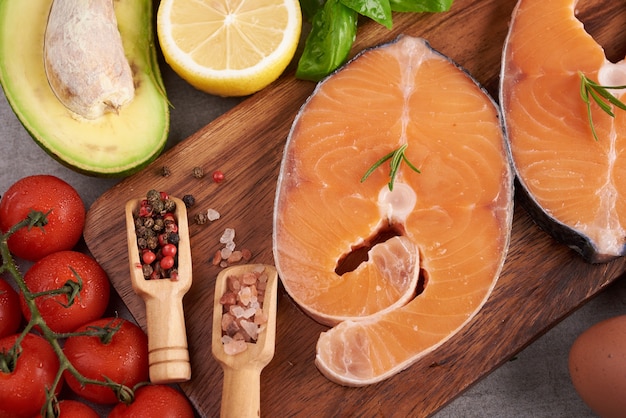Let me tell you, there's nothing quite like a perfectly cooked piece of salmon. That flaky, juicy, and flavorful fish is a true delight, but it's also easy to mess up. Overcook it, and you're left with a dry, rubbery mess. Undercook it, and well, let's just say you might be in for an unpleasant experience.
I've been there, folks. I've made my fair share of salmon disasters, but I've also learned a few tricks along the way. So, whether you're a seasoned chef or a kitchen newbie, this guide is your ticket to salmon cooking success. We're going to dive into the world of salmon cooking temperatures, explore different methods, and uncover the secrets to achieving that "oh-so-perfect" salmon you've been craving.
(Part 1) The Basics: Understanding the Temperature

The Importance of Temperature: Why It Matters
The temperature at which you cook your salmon is like the secret sauce of flavor and texture. It's the key to unlocking that melt-in-your-mouth goodness. We want the salmon to be cooked through, but not overdone, achieving that delicate balance between tenderness and safety.
The Ideal Temperature Range: Finding That Sweet Spot
Now, here's the golden rule: aim for an internal temperature of 125°F (52°C) to 145°F (63°C). This range guarantees your salmon is safely cooked while retaining its succulent juiciness. Remember, it's all about finding that sweet spot!
Using a Thermometer: Your Secret Weapon
I can't emphasize this enough: Invest in a good quality meat thermometer! It's your ultimate weapon against overcooked salmon. Simply insert the thermometer into the thickest part of the salmon, avoiding the bone, and let it do its magic. Trust me, it's a game-changer.
(Part 2) Cooking Methods and Temperature Variations: The Right Tool for the Job

Pan-Seared salmon: Quick, Easy, and Delicious
Pan-searing is a classic method that delivers incredible flavor and a beautiful crust. Heat your skillet over medium-high heat and sear the salmon skin-side down for about 3-4 minutes. Then, flip it over and cook for another 2-3 minutes, or until the internal temperature reaches that perfect 125°F to 145°F.
baked salmon: A Simple and Versatile Option
baking salmon is a breeze. Preheat your oven to 375°F (190°C) and place the salmon on a baking sheet lined with parchment paper. Bake for about 12-15 minutes, or until that thermometer reads the magic numbers.
grilled salmon: Smoky Flavor and Outdoor Delight
Grilling salmon takes your meal to a whole new level, infusing it with that smoky, char-grilled flavor. Preheat your grill to medium-high heat and grill for about 4-6 minutes per side. Keep an eye on that thermometer, and you'll be rewarded with delicious results.
(Part 3) Different salmon cuts and cooking times: Tailoring Your Approach

Salmon Filet: The Classic Cut
Salmon filets are the most common cut, and they cook quickly. Expect them to take between 10-15 minutes depending on thickness.
Salmon Steak: A Hearty and Flavorful Option
Salmon steaks are thicker than filets, so they need a little more time to cook. Allow around 15-20 minutes, depending on the size and thickness of the steak.
Salmon Belly: Fatty, Flavorful, and Delicious
Salmon belly is a treasure trove of flavor and fat. It's a bit thicker than a filet, so aim for 12-15 minutes of cooking time.
(Part 4) Tips for perfect salmon: Mastering the Art
Don't Overcrowd the Pan: Give Them Space to Breathe
If you're pan-searing, make sure you don't overcrowd the pan. Give each piece of salmon its own space so they cook evenly. It's a simple rule that can make a big difference!
Use High-Quality Salmon: The Foundation of Great Flavor
Choosing fresh, high-quality salmon is crucial for a delicious outcome. It's the foundation of your dish, so don't settle for anything less.
Season Simply: Let the Salmon Shine
Salmon has a delicate flavor, so keep the seasonings simple. A sprinkle of salt and pepper is usually all you need to let the natural flavor shine.
Let the Salmon Rest: The Secret to Tenderness
After cooking, let the salmon rest for a few minutes before serving. This allows the juices to redistribute, resulting in a more tender and flavorful experience.
(Part 5) The Difference Between Doneness and Overdoneness: Knowing the Signs
How to Tell if Salmon is Done: The Telltale Signs
The best way to tell if salmon is done is with a thermometer. However, there are other clues to look for: The flesh should be opaque, and it should flake easily with a fork. Gently press the salmon with your finger; it should spring back.
Signs of Overcooked Salmon: Avoiding the Dry and Rubbery Disaster
Overcooked salmon is a tragedy! It will be dry, flaky, and rubbery. The flesh will be white or gray, and it will stick to the pan or baking sheet.
Doneness vs. Overdoneness: A Clear Visual Guide
Here's a table to help you visualize the key differences between perfectly cooked and overcooked salmon:
| Doneness | Overdoneness |
|---|---|
| Flesh is opaque and flakes easily | Flesh is dry, flaky, and rubbery |
| Flesh is pink or orange | Flesh is white or gray |
| Salmon springs back when pressed | Salmon sticks to the pan or baking sheet |
(Part 6) Mistakes to Avoid When cooking salmon: Learning From My Errors
Overcrowding the Pan: Space is Key!
Yes, I've done this! Overcrowding the pan leads to uneven cooking. Learn from my mistake, and give your salmon plenty of space.
Cooking at Too High a Temperature: Slow and Steady Wins the Race
Cooking at too high a temperature can dry out your salmon. Stick to medium-high heat for pan-searing and follow the recommended oven temperature for baking.
Not Using a Thermometer: The Crucial Tool for Success
I've been there! Using a meat thermometer is the only way to guarantee a perfectly cooked salmon. It's your best friend in the kitchen.
Not Letting the Salmon Rest: The Importance of Rest
Don't skip this step! Resting your salmon after cooking is essential for moisture and flavor. Let it rest for a few minutes before serving.
(Part 7) Tips for Saving Overcooked Salmon: Turning a Mistake into a Meal
Okay, so you've overcooked your salmon. Don't panic! Here's how to rescue that salmon and turn it into a delicious meal:
Shred the Salmon: Perfect for Salads and Tacos
Overcooked salmon is perfect for shredding! Use it in salads, tacos, or sandwiches. The dry texture won't be a problem in these applications.
Use It in a Soup or Stew: A Flavorful Addition
Add overcooked salmon to a soup or stew. It will add a delicious flavor, and the dry texture will blend right in.
Make a Salmon Dip or Spread: A Delicious Appetizer
Mix overcooked salmon with cream cheese, mayonnaise, and other ingredients to create a delicious dip or spread. It's a great way to use up leftover salmon.
(Part 8) The Importance of Freshness and Storage: Ensuring Quality
Choosing Fresh Salmon: Looking for the Best
When buying salmon, look for fresh fish with bright, clear eyes and firm, elastic flesh. The skin should be shiny and free of blemishes.
Storing Salmon: Keeping it Fresh
If you're not cooking salmon right away, store it in the refrigerator for up to two days. Wrap it tightly in plastic wrap or aluminum foil to prevent it from drying out.
(Part 9) Cooking Salmon with Different Flavors: Exploring flavor profiles
Lemon and Dill: A Classic Combination
Lemon and dill are a classic pairing that brightens up the salmon's flavor. Simply squeeze some lemon juice over the salmon and sprinkle with fresh dill.
Garlic and Herbs: Savory and Aromatic
Garlic and herbs like rosemary and thyme add a savory and aromatic dimension to salmon. Rub the salmon with a mixture of garlic, herbs, and olive oil before cooking.
Soy Sauce and Ginger: A Flavorful Fusion
Soy sauce and ginger create a savory and slightly sweet flavor profile. Mix soy sauce, ginger, and honey to create a marinade for the salmon.
Smoked Paprika: A Smoky and Spicy Kick
Smoked paprika adds a smoky and spicy flavor. Mix smoked paprika with olive oil and garlic to create a flavorful rub for the salmon.
(Part 10) FAQs: Addressing Your Burning Questions
What does salmon look like when it's cooked?
Cooked salmon has firm, opaque flesh that flakes easily with a fork. It should also spring back when pressed lightly with a finger.
How long should I cook salmon in the oven?
The oven cooking time depends on the thickness of the salmon. A general rule of thumb is to bake salmon for about 12-15 minutes at 375°F (190°C).
Can you eat raw salmon?
While salmon is often eaten raw in sushi, it's important to use high-quality, fresh salmon that has been properly frozen to kill any parasites. If you're unsure about the safety of eating raw salmon, it's best to cook it.
What are the health benefits of salmon?
Salmon is a good source of protein, omega-3 fatty acids, and vitamin D. These nutrients are essential for maintaining good health.
How can I tell if salmon is bad?
If salmon has a strong, fishy smell, it's likely spoiled. The flesh should also be firm and springy. If it's mushy or discolored, it's best to throw it away.
Everyone is watching

How to Cook Frozen Lobster Tails Perfectly: A Step-by-Step Guide
RecipesLobster. Just the word conjures up images of lavish meals, special occasions, and a taste of luxury. But let's...

Pigs in a Blanket Cooking Time: How Long to Bake for Perfect Results
RecipesAh, pigs in a blanket. Just the name conjures up images of those delightful little parcels of crispy pastry en...

Pork Fillet Cooking Time: How Long to Cook It Perfectly
RecipesPork fillet, or tenderloin as it's sometimes called, is a real favourite in our house. It's so versatile, and...

The Ultimate Guide to Cooking Sweet Potatoes: From Roasting to Mashing
RecipesSweet potatoes. Just the name conjures up images of warm, comforting dishes, bursts of vibrant color, and a to...

The Ultimate Guide to Tender, Juicy Pulled Pork
RecipesRight, let's talk pulled pork. It's one of those dishes that just screams "comfort food," doesn't it? I mean...
